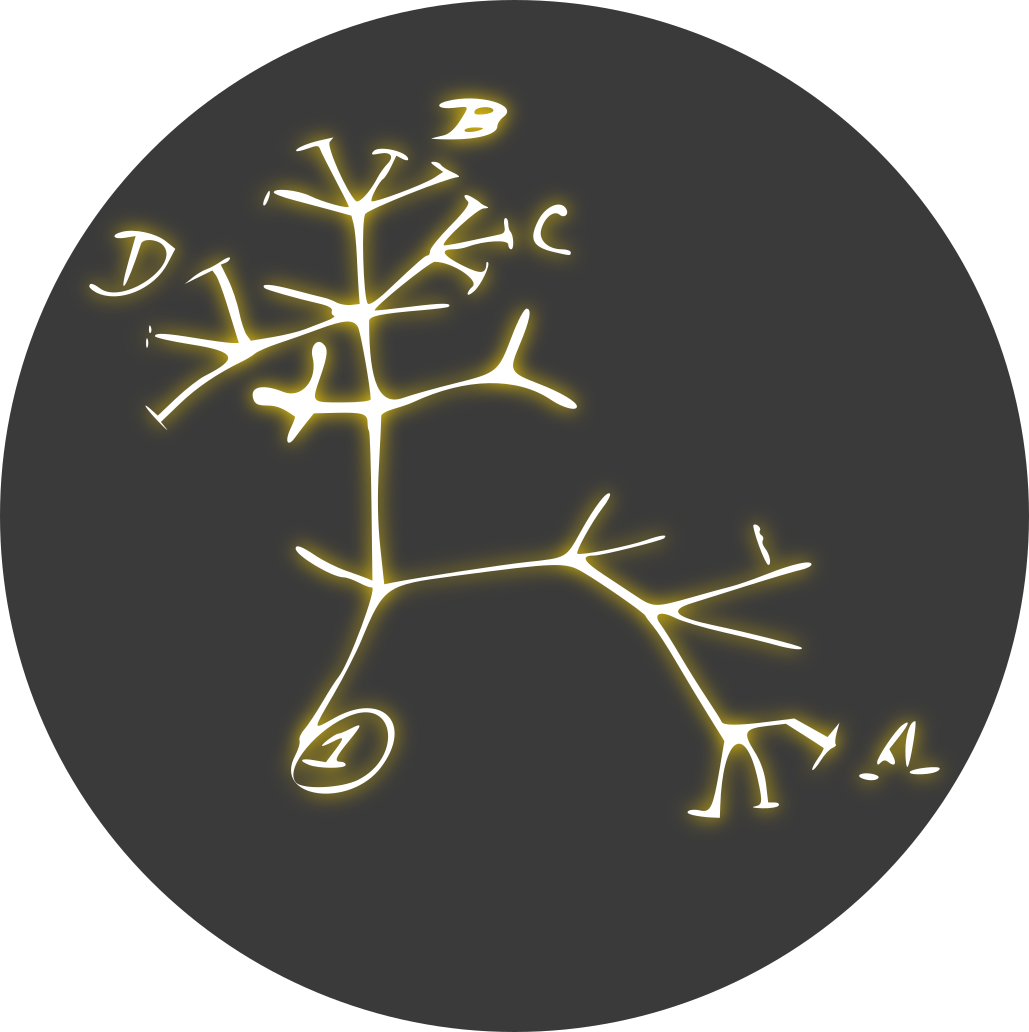I have edited my original comment with important corrections. Commenting again so that you don’t miss them.
Salamander
- 139 Posts
- 421 Comments
EDIT: I looked more into the ethernet + RAK boards. I was surprised to find claims that the boards that make use of the Nordic nRF microcontroller do not expose an interface for receiving commands nor do they expose a Webserver. It seems they can push data to the MQTT broker, but it might not possible to control them over the network. Here is a short discussion I found about this: https://www.reddit.com/r/meshtastic/comments/1ebcnay/rak_board_ethernet_non_web_client_access
I can’t find evidence to support that it works today. I know that ESP32-based meshtastic devices do expose the webserver and the TCP interface. But I am not sure about how to add the ethernet interface.
original comment
Simplest option would probably be to make use of the RAK system. They provide modular boards for Meshtastic, and one of modules is an Ethernet interface: https://docs.rakwireless.com/product-categories/wisblock/rak13800/datasheet/
The WisMesh Ethernet MQTT gateway is an example of an assembled module that uses the RAK19007 WisBlock Baseboard as the base that includes the power management and the slots for attaching the modules, the RAK4631 LoRa transciever module to provide the radio, and the RAK13800 Ethernet Module to provide Ethernet connectivity.

The version that does not include an enclosure and has no Power-Over-Ethernet costs $43 through RAK. You can also get the versions with enclosure and with PoE. For PoE, you will need to have an ethernet modem/router capable of providing power over ethernet or a PoE ethernet switch.
I don’t know much about the other Ethernet options, but there is a good chance that a good amount of them will consist of a custom 3D-printed enclosure with the RAK system inside.
Another option is to use a Raspberry Pi or a regular computer as a bridge. The computer/raspberry pi connects to the network over ethernet and interfaces with a standard Meshtastic device via USB or via a HAT using the PI’s GPIO pins (example of the HAT: https://www.youtube.com/watch?v=91ULi9DWgds).
I don’t have the Heltec V3, but the model I was able to find online does support WiFi.
You need to connect to it using some other device. It can be with Bluetooth using an app, or via USB using a web client. Once you are connected to it, you can go to Radio Configuration and add the WiFi info in the Network settings.
Then, you need to figure out what its IP is. There are a few different ways to do it. Usually I log into my router and check the IP of the latest device to log into the WiFi.
You can then go to that IP via your browser, and you will see this:

You can then connect to it and interact with the device over the browser.

To interact with it using the python library, you set the device’s IP as the NODE’s interface. Here is an example of a very simple script that will connect to the node via its IP and cause it to automatically respond with ‘Pong’ to any message that it receives that contain ‘Ping’.
import meshtastic import meshtastic.tcp_interface from pubsub import pub import time # Your Meshtastic node's IP MESHTASTIC_NODE_IP = "192.168.8.149" def onReceive(packet, interface): if 'decoded' in packet and 'payload' in packet['decoded']: try: message = packet['decoded']['payload'].decode('utf-8') sender = packet['from'] if "Ping" in message: interface.sendText("Pong", destinationId=sender) except Exception as e: pass interface = meshtastic.tcp_interface.TCPInterface(hostname=MESHTASTIC_NODE_IP) pub.subscribe(onReceive, "meshtastic.receive") while True: time.sleep(5) # Keep the script running
Is there a specific reason why you are choosing Bluetooth instead of WiFi? Connecting the Heltec V3 to the local WiFi will let you interact with it over the network. I think that this would make what you want to do a lot easier.
And https://en.wikipedia.org/wiki/Quantum_fluctuation
Edit: I guess it’s these two are kind-of the same thing
I would give the Letharia dye another try
Would love to… When I was in Oregon this lichen was super abundant. At the moment I am living in Amsterdam (Netherlands), and I see mostly Xanthoria, Evernia, Rhizocarpon, and a few other lichen species that grow on city trees, but they are very small and spotty, nothing compared to the wolf lichen in Oregon. I do miss the Oregon forests with the old growth sequoia redwood trees and all that lichen.
9ft of snow?! I only experienced such deep snow in an urban setting while living in Connecticut for a year. I spent a few years in Oregon but the snow in the area never got so deep while I was there. When I was in the US I was not yet able to identify many fungi as I was mainly obsessed with animals (especially salamanders) back then, so unfortunately I did not really appreciate the diversity of fungi there. Although once in Oregon I did attempt to dye some socks using a wolf lichen (Letharia vulpina) and a pressure cooker. That did not end well.
I see. So it is not necessarily that their mycelium are better at surviving the freezing temperatures, but rather that either they fruit quicker once conditions are acceptable or that their fruiting bodies are more cold tolerant. Thanks, it’s interesting.
Cool! I just read their wiki page and it says
A snowbank fungus, it is most common at higher elevations after snowmelt in the spring.
Snowbank fungus is a new term for me. Not sure yet what makes a fungus thrive through snow. Maybe they have anti-freeze proteins?
Does your area get a lot of snow?

 4·2 months ago
4·2 months agoWow, those spores are so bumpy, they are very interesting! Thanks for sharing :D

 81·2 months ago
81·2 months agoNo. I think they both lose more than they gain here. It doesn’t make sense as a strategy. Ego clash is a simple explanation.

 2·2 months ago
2·2 months agoI bought a National Instrument’s data acquisition card (PCIe-6535B) not knowing that National Instruments is not very Linux-friendly and I was not able to get it working. At least it was a used card so I did not pay to much for it, but I learned my lesson not to assume compatibility.
Once I also used ‘rm -rvf *’ from my home directory while SSH’d into a supercomputer (I made a syntax error when trying to cd into the folder that I actually wanted to delete). I was able to get my data restored from a backup, but sending that e-mail was a bit embarrassing 😆
Wow, a really nice shot of a really nice frog!
Here, I’m assuming “it” is a conscious perception. But now I’m confused again because I don’t think any theory of mind would deny this.
Yes, the example of such a theory that is common is epiphenomalism. What I am contrasting in my answers is the epiphenomalist/hard-determinist framework with the physicalist/compatibilist one.
stimuli -> CPM ⊆ brain -> consciousness update CPM -?> black box -?> mind -?> brain -> nervous system -> response to stimuli
I can try to explain with such a diagram:
stimuli -> nerves -> brain input ports -> brain filtering and distribution -> Conscious brain processing via causal predictive modelling -> brain output ports -> nerves -> conscious action | -- > Unconscious processing -> brain output ports -> nerves -> unconscious actionSo, the CPM is a process within the brain. The idea is that the brain is a computer that makes predictions by building cause-and-effect models. What is interesting about the mathematics of causal models is that the underlying engine is the counterfactual. The claim being made here is that mind itself is this counterfactual engine doing its work. The computational space that deals with the counterfactuals or “fantasies” is the essence of the mind.
This is not in any way a solution to the hard problem of consciousness. Rather, it is one of many frameworks compatible with physicalism, and it is the one I personally subscribe to. In this framework, it is a postulate that conscious experience corresponds to the brain’s counterfactual simulations within a generative model used for predicting and guiding action. This postulate does not prove or mechanistically explain consciousness. No physical theory currently does.
I’m going to stick with the meat of your point. To summarize, …
That is not quite how I see it. The linear diagram “brain -> black box -> mind” represents a common mode of thinking about the mind as a by-product of complex brain activity. Modern theories are a lot more integrative. Conscious perception is not just a byproduct of the form brain -> black box -> mind, but instead it is an essential active element in the thought process.
Ascribing predictions, fantasies, and hypotheses to the brain or calling it a statistical organ sidesteps the hard problem and collapses it into a physicalist view. They don’t posit a mind-body relationship, they speak about body and never acknowledge the mind. I find this frustrating.
That text was probably written by a materialist / physicalist, and this view is consistent within this framework. It is OK that you find this frustrating, and it is also alright if you don’t accept the materialist / physicalist viewpoint. I am not making an argument about materialism being the ultimate truth, or about materialism having all of the answers - especially not answers relating to the hard problem! I am specifically describing how different frameworks held by people who already hold a materialist view can lead to different ways of understanding free will.
Scientists often do sidestep the hard problem in the sense that they acknowledge it to be “hard” and keep moving without dwelling on it. There are many philosophers (David Chalmers, Daniel Dennett, Stuart R. Hameroff), that do like getting into the nitty-gritty about the hard problem, so there is plenty of material about it, but the general consensus is that the answers to the hard problem cannot be find using the materialist’s toolkit.
Materialists have is a mechanism for building consensus via the scientific method. This consensus mechanism has allowed us to understand a lot about the world. I share your frustration in that this class of methods does not seem to be capable of solving the hard problem.
We may never discover a mechanism to build consensus on the hard problem, and unfortunately this means that answers to many very important questions will remain subjective. As an example, if we eventually implement active inference into a computer, and the computer claims to be conscious, we may have no consensus mechanism to determine whether they “really” are conscious or not, just as we cannot ascertain today whether the people around us are conscious. In my opinion, yes, it is physically possible to build conscious systems, and at some point it will get tricky because it will remain a matter of opinion. It will be an extremely polarizing topic.

 2·2 months ago
2·2 months agoAs far as I can tell, this is the legal document associated with the lawsuit: https://storage.courtlistener.com/recap/gov.uscourts.nysd.642027/gov.uscourts.nysd.642027.1.0.pdf
The most significant component of this claim is not the lawsuit itself (examples of frivolous lawsuits are common), but that BlackRock is the one suing. BlackRock doing this is the important and remarkable claim here.
I see no obvious connection between Roberto Faller and BlackRock. To me this looks like a frivolous lawsuit issued by a random inconsequential individual. So, then, framing it as BlackRock suing is blatant misinformation.
I could be missing something here, perhaps there is indeed a BlackRock connection that I was unable to identify. But that Medium article is certainly not explaining the connection. The CBS article does not mention BlackRock.
If there is no connection to BlackRock, then adding “BlackRock” to the title is not click-bait! It is a blatant lie.
You are a radical vegan
Moderates







- Animal behavior@mander.xyz
- Invertebrates@mander.xyz



- New Communities@mander.xyz

- Nudibranchs@mander.xyz
- Self sufficiency@mander.xyz
- Plants@mander.xyz















Ahh, really?! Thanks for letting me know. I will see if there is something I can do to throttle that after holidays. Curious to see what solutions others come up with